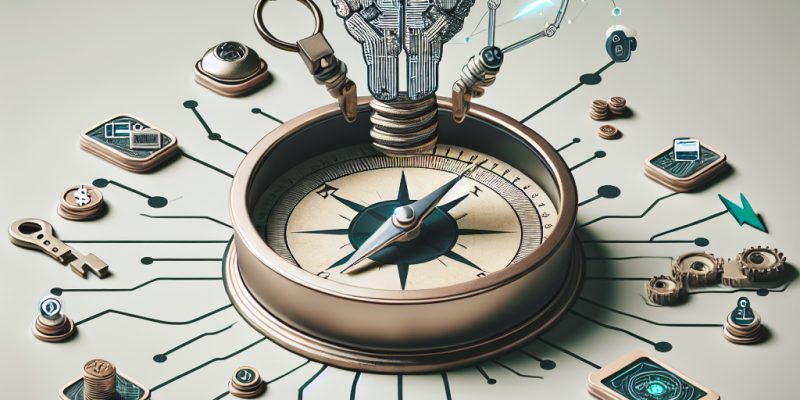Navigating the Automation Revolution: The Benefits and Challenges of AI

The dawn of the automation revolution, largely driven by artificial intelligence (AI), is redefining industries, enhancing productivity, and reshaping the workforce landscape. With the rapid advancement of AI technologies, businesses and societies are presented with unprecedented opportunities as well as significant challenges. This article delves into the multifaceted implications of this revolution, highlighting both the promising benefits and the complex challenges that accompany it.
The Promising Benefits of AI in Automation
1. Enhanced Efficiency and Productivity
One of the most significant advantages of AI-driven automation is its ability to improve efficiency. AI systems can process vast amounts of data far more quickly than any human can. Tasks that previously took hours or days can often be completed in a fraction of that time. This acceleration can lead to increased productivity, allowing businesses to achieve more with fewer resources. For instance, automated customer service chatbots can handle customer inquiries around the clock, reducing wait times and freeing human agents to tackle more complex issues.
2. Cost Reduction
Implementing AI can lead to substantial cost savings for businesses. Automation reduces the need for manual labor, minimizes human error, and optimizes resource allocation. Companies can redirect their financial resources to innovation and development rather than routine tasks. As AI continues to evolve, the initial investment often results in long-term savings that can significantly impact the bottom line.
3. Improved Decision-Making
AI has the capability to analyze complex datasets and extract actionable insights, facilitating better decision-making processes. Techniques like predictive analytics can forecast trends and consumer behaviors, enabling businesses to make informed strategic choices. In sectors like healthcare, AI can assist in diagnosing diseases more accurately by analyzing medical images and patient data, ultimately leading to improved patient outcomes.
4. Customization and Personalization
Consumers today are seeking tailored experiences. AI empowers businesses to deliver personalized products and services by analyzing user data. From personalized marketing campaigns to customized product recommendations, AI can help companies better understand their customers’ preferences, resulting in improved customer satisfaction and loyalty.
5. Innovation and New Markets
AI-driven automation fosters innovation by enabling the development of new products, services, and business models. Industries that traditionally relied on manual processes, such as agriculture and manufacturing, are now leveraging AI for precision farming and smart manufacturing. This shift not only enhances productivity but also opens up new markets and opportunities for entrepreneurs.
The Complex Challenges of AI in Automation
1. Job Displacement
The most pressing concern regarding the automation revolution is the potential for job displacement. As AI systems take over routine tasks, there is a fear that many workers may find themselves unemployed or underemployed. While some jobs may be created in AI development and maintenance, there is a significant risk that displaced workers may lack the necessary skills for new employment opportunities, exacerbating socio-economic inequalities.
2. Ethical and Security Concerns
The deployment of AI in various sectors raises ethical questions about accountability, transparency, and bias. Algorithms can perpetuate existing biases present in the training data, leading to unfair outcomes. Moreover, as businesses collect and analyze more personal data, issues of privacy and data security become increasingly paramount. Ensuring that AI systems are designed and implemented ethically is a challenge that governments, businesses, and technologists must address collectively.
3. Dependency on Technology
As businesses become more reliant on AI-driven automation, there is a risk of technological dependency. System failures or cyberattacks can lead to significant disruptions. Ensuring robust system security and maintaining human oversight becomes critical in a landscape increasingly dominated by AI.
4. Regulatory Challenges
The rapid pace of AI adoption often outstrips existing regulatory frameworks, creating a challenge for policymakers. Striking a balance between fostering innovation and ensuring ethical standards is crucial. Policymakers must navigate complex issues surrounding labor laws, data protection, and AI governance to create a conducive environment for technological advancement while protecting societal interests.
5. Skill Gaps and Workforce Transformation
As AI technologies evolve, the workforce must adapt to new tools and processes. There is an urgent need for reskilling and upskilling programs to prepare workers for a changing labor market. Educational institutions, businesses, and governments must collaborate to create training initiatives that equip individuals with the digital skills required in an AI-driven economy.
Conclusion
The automation revolution, fueled by AI, presents a paradox of significant benefits and formidable challenges. While embracing automation can lead to enhanced productivity, cost savings, and innovative solutions, it also requires careful navigation of ethical dilemmas, workforce transformation, and regulatory frameworks. As society stands at this crucial juncture, it is essential for stakeholders—business leaders, policymakers, educators, and workers—to engage in open dialogues to shape an inclusive future that harnesses the power of AI while addressing the challenges it brings. By doing so, we can ensure that the benefits of the automation revolution are broadly shared and that our societies are prepared to thrive in an increasingly automated world.














